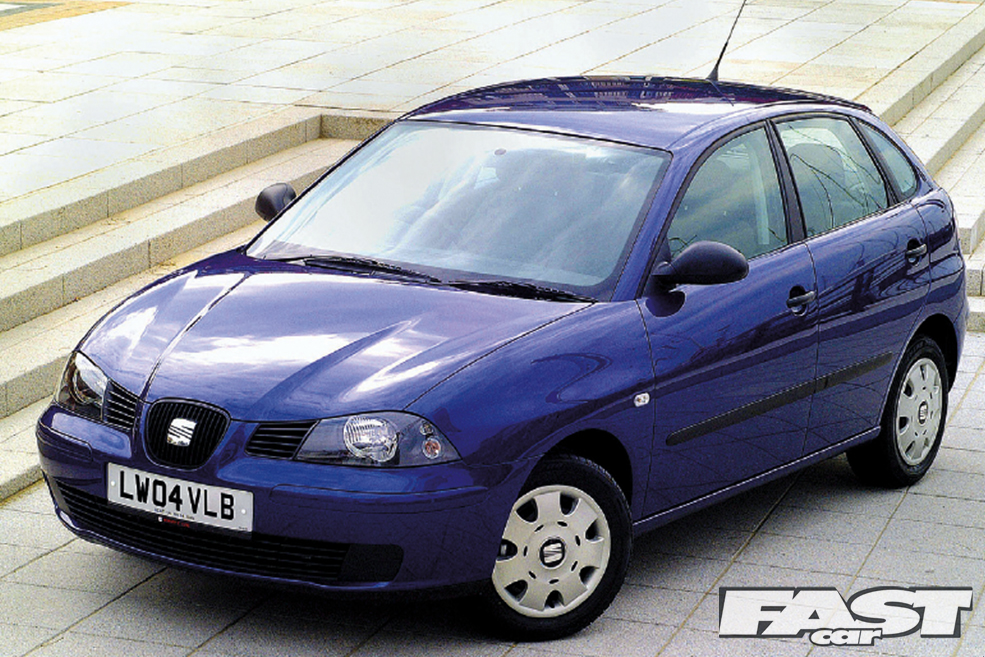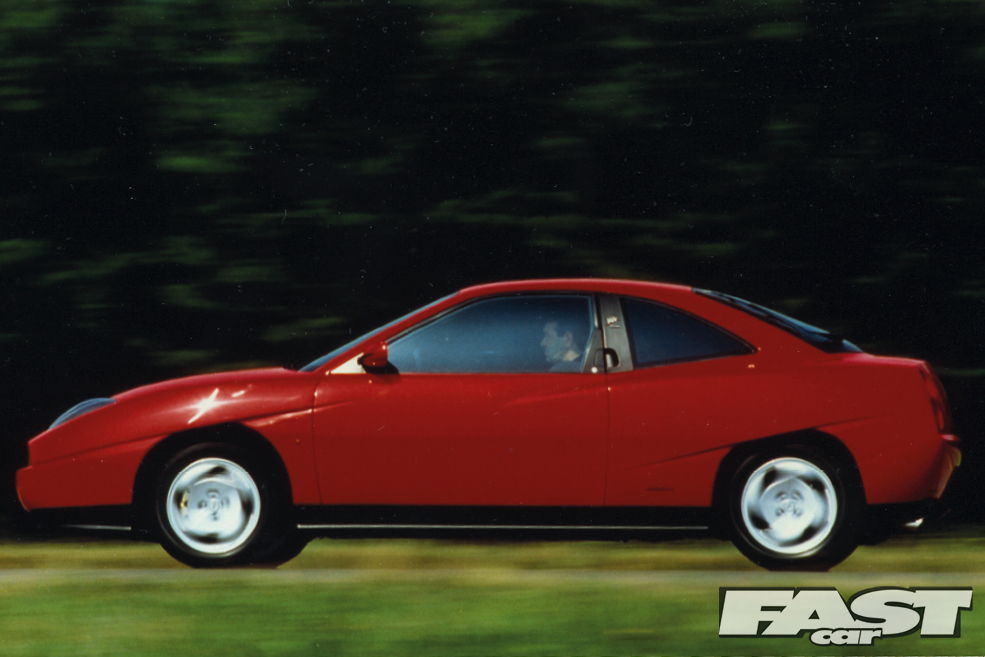The cult of the sleeper is well established – cars that appear unassuming but harbour secret depths of hidden firepower. Here’s 10 of the best sleeper cars…
You know the kind of thing: the Volvo 850 T5 estate, Mitsubishi Galant VR-4, VW Passat W8, Lancia Thema 8.32 (y’know, that humdrum saloon with the Ferrari V8 shoved into it)… but that’s not quite what we’re talking about here. No, we’re looking at the cars that are generally sidelined for being a bit ordinary, not terribly exciting, but have hidden potential to be tuned up to improbable and spooky levels. Not factory sleepers, but DIY sleepers!
You see, engines exist in families. You may find a detuned version in a lowly model, which can be very easily either modified to be as powerful as the top-of-the-line sport variant, or just simply swapped without drama. And sometimes the manufacturer simply shoved the full-fat, high-spec version in a dull car and nobody noticed. Whichever way, there’s hidden horsepower out there in places you wouldn’t expect.
Here are some surprising options to get you from zero to hero without anyone realising…

SEAT Exeo
The Exeo is a weird car. It’s not bad as such, it’s just… kind of pointless. It’s as if the big cheeses at the company had a meeting one day and someone said ‘Hang on a minute – we don’t have a new car in the saloon-versions-of-hatchbacks niche right now. Can we just throw one together out of various bits from the parts bin?’ So it’s not really a unique design, more a Frankenstein’s monster; in fact there’s quite a lot of Audi A4 in there. But the juicy detail is that the Exeo was available with the Volkswagen group’s iconic 1.8 20vT motor – the very same one that you find in 210bhp form in the Audi S3, or 225bhp in the TT. OK, the Exeo’s 20vT only offered 148bhp, but it’s the same basic engine.
How do you get to to full-fat 225 spec? Well, the block is the same, but the 225 has different pistons, crank, MAF, injectors, cats, mapping, intercoolers, plus a bigger turbo – so you could just find a BAM-code TT engine and swap it straight in (probably easier), although even a simple remap of the Exeo’s motor would get it past 180bhp without trouble. And since there’s so much Audi in this oddball SEAT, how hard could it be to build yourself an Exeo Quattro…?
TOP THREE MODS: Remap, K04 turbo, uprated fuelling

Nissan Almera
There are iconic hot hatches, there are niche hot hatches, and then there’s the Nissan Almera GTI. It’s one of those cars that, despite being reasonably good, only five people actually care about them. Those five people are massive fans, will bend your ear for hours about how ‘it’s a good car, really, trust me’ and have spent a lot of money building stellar versions for themselves, but it’s never a car that’s going to worm its way into those ubiquitous Best Hot Hatch of All Time lists.
This, of course, is where you can be a bit sneaky. You see, the Almera GTI has an SR20 motor. And where else do you find the SR20? Yep, the 180SX, the 200SX, the Sunny GTI-R – in SR20DET form, this is a hard-boosting nutter that just loves to be tuned up to insane levels.
The ‘T’ in the name is significant. It stands for ‘turbo’. The Almera GTI’s engine is an SR20DE – without the ‘T’ – so we’re talking 140bhp from the factory. Not that thrilling. But the key point is what it represents: the SR20 architecture is native to the Almera, so you can find yourself a hot turbocharged motor and literally just bolt it in – don’t faff with the complexity of trying to boost your engine, just find a proper DET. Insane horsepower is well within reach. (You might want to upgrade your brakes though, and maybe throw an LSD into the mix!)
TOP THREE MODS: SR20DET engine, LSD, all the boost

Ford Transit
Alright it’s not a car, you’re just going to have to go with us on this one. As multi-talented as the backbone-of-Britain Transit van may be, it’s never really been regarded for the potency and tunability of its engine, has it? Sure, there have been a few entertaining exceptions to this rule; the various Supervans Ford built for PR purposes, and Jaguar’s XJ220 test mule being notable examples. But the bone-stock builder-spec Trannie? Well, yes actually – there is potential there.
You see, if you buy a petrol-engined Transit from the 1980s or early ’90s, you’ll spot the number ‘205’ cast into the engine block. You know which other Pinto has a 205 block? You’ve got it, it’s the Cosworth YB, like you’d find in Escort and Sierra RS Cosworths. So if you’re a plumber or a roofer who wants to break into the lucrative market of making 24-hour emergency callouts, 600bhp is just a weekend with the spanners away. Er, possibly. It’d make an awesome sleeper too, wouldn’t it? Leave a ladder lashed to the roof and a yellowing copy of The Sun on the dash for extra stealth points.
TOP THREE MODS: Twin-cam 16v head, huge turbo, dash full of Greggs wrappers

Saab 9-2X
When is a Saab not a Saab? When it’s a 9-2X. Yeah, that’s a pretty crap Christmas cracker joke, but also a fact that may have passed some people by. Naturally there’s a lot of enthusiasm for the tunability of Saab turbo motors, as they’re as strong as the proverbial ox and loving having sodding great wodges of boost shoved into them. But the 9-2X is an entirely different kettle of fish.
The crux of the matter is that it isn’t actually a Saab at all. It’s a Subaru Impreza with an inexplicable Saab grille glued to the nose.
You could get them in two spec levels – Linear or Aero. In Linear form, the 9-2X had a nat-asp Subaru 2.5-litre flat-four, while the Aero came bristling with the turbo’d 227bhp WRX motor. Which, as you know, just loves to have its belly tickled by men with oily spanners who can throw 400bhp through it in the twinkling of an eye, while everyone who sees you wubba-wubba-wubbaing past will assume you’ve bought yourself a sensible old man’s estate car and there’s something wrong with the engine.
OK, the 9-2X was an American-market car that only sold for a couple of years, but it’s such a weird quirk of Saab’s history that we couldn’t leave it out!
TOP THREE MODS: STI heads, FMIC, standalone management

Audi A6 2.7T
The C5-generation Audi A6, built from 1997-2004, is known for two completely separate things: being a sensible and frugal family car, and being a turbo-nutter mega-Quattro. The former is more often the case, with diesel-powered estate cars serving sterling duty in load-lugging, hauling old paving slabs to the tip, and carting the nippers across Europe on holiday road-trips. The latter? Well, the halo is the bonkers RS6, which had a 4.2-litre twin-turbo V8 with 444bhp. The slightly less mad S6 was still completely loopy – elitists may sideline it as a soft option, but it still had a bruising V8 and 335bhp. Hero cars, both.
…however, there’s something else in the C5 line you should know about: the 2.7T. With this car, you need to forget that it’s an A6 and instead see it as a stealthy S4 – by taking the 2.7-litre twin-turbo V6 (complete with 247bhp) from the smaller-brother S4, and crowbarring it into an A6 that looks like it’s on school-run duty, Audi played a surprising blinder.
The performance potential speaks for itself here. These engines are insane – whack on a couple of K04 turbos, a bigger intercooler and a decent exhaust, map it robustly, and you’re staring down the barrel of an S4-baiting 400bhp+. And coupled with the fact that most of the S6/RS6 bits will bolt on easily (the huge brakes, for example), the humble-looking 2.7T could be a real giant-killer.
TOP THREE MODS: K04 turbos, remap, RS6 brakes

SEAT Ibiza TDI Sport
The Skoda Fabia vRS is a bit of an underground classic: when it was launched in 2003, there was quite a lot of scoffing at the fact that they’d created something that was supposed to be a hot hatch but was only available with a diesel engine. Diesel + Skoda = flat-caps, not B-road thrills.
…but then it turned out that the vRS was hilarious fun; the headline 130bhp power figure was irrelevant, because the power delivery was all about that 228lb.ft of torque available from just 1500rpm. This thing could hustle!
But when the decision-makers at VAG decided to shove the Fabia vRS mechanicals into a SEAT Ibiza to create the TDI Sport, no-one really noticed. Here was a car that basically looked like every other cheapo Ibiza, it didn’t have a Cupra badge – who cares about that?
Well, you should. Because you can pick these things up for peanuts now, and that PD engine has appeared in all sorts of stump-pulling terrors across the VAG-o-sphere. Fancy 158bhp and 243lb.ft? Just rob a few minor bits off a Mk3 Ibiza. Or 150bhp can be found in PD engines in anything from the Mk4 Golf to the Ford Galaxy (which, of course, was actually a SEAT Alhambra). And with a hybrid turbo, FMIC and some bigger injectors you could be chuckling through the dark veil of 230bhp, whilst leaving comically big black clouds everywhere – the stock internals are good for 450lb.ft too, you don’t even need to crack it open. No-one will suspect a thing until you boot it.
TOP THREE MODS: Hybrid turbo, FMIC, uprated fuelling

Fiat Coupe 16v Turbo
Here’s a car that really reinforces the fact that we’re not talking strictly about sleepers here. Just look at the thing. Gorgeous, isn’t it? A superbly weird bit of design with perfect proportions, it’s aged very well indeed. Certainly pretty enough for you to forget that they have tendency to break all the time in surprising ways. (Trust us, we’ve owned a few – they make great ornaments.) You could never call it a sleeper, as it’s so obviously a sports car. But there’s still a vital wolf-in-sheep’s-clothing element here, even if the sheep in question is wearing Air Max and limbering up to eurodisco.
The thing about the Coupe, as with a lot of cars, is that it’s subject to a fair bit of snobbery. Anyone with a handful of knowledge will tell you that the 20v Turbo is the version to go for, the five-cylinder engine being entertainingly warbly and throwing out 220bhp.
The lesser 16v Turbo, meanwhile, resides in the shadows, unloved and unappreciated. Which is a shame, as its 190bhp four-cylinder motor is actually the same as the one you’d find in the Lancia Delta Integrale. Seriously. That little 16v badge on the B-pillar isn’t a mark of shame because you bought the slower car, it’s your one-way ticket to Group A rally thrills. It’s already packing the P8 management that you’d find on an Integrale (or, interestingly, an Escort RS Cosworth), and this can be artfully recalibrated and set to work with some uprated fuelling and a bigger turbo, and suddenly you’ve got over 400bhp. Strap on the anti-lag and terrify some pedestrians.
TOP THREE MODS: Huge turbo, remap, anti-lag

Proton Satria
The Satria GTI was a car that everyone got excited about, and then promptly forgot. There’s only about 120 of them left on the road in the UK, but back in 1998 this was very much where it was at. For about twenty minutes, anyway.
Why all the excitement? Well, because Protons are a bit rubbish, aren’t they? And yet suddenly they’d released a car with a GTI badge – and it wasn’t a cynical marketing exercise either, they’d got Lotus to set up the handling (a fact they wouldn’t shut up about, gluing Lotus badges all over the bloody thing) and it had an oh-so late-nineties bodykit, all screwed-on arches and drive-thru-cruise aggression.
So… can a top-of-the-range hot hatch ever really be a wolf in sheep’s clothing? In this case, actually, yes. Because the engine – a 1.8-litre four-pot offering 138bhp – was, somewhat surprisingly, a Mitsubishi Lancer GSR engine that’d had its turbo lopped off. So all you have to do is reinstate the turbo (OK, and fiddle around with some other stuff) and you’ve got a pint-sized Evo. Or rather than buggering about, just find an actual Evo engine and a FWD Mitsubishi gearbox, and marvel at how it all just bolts in. Madness and mischief guaranteed.
TOP THREE MODS: Evo engine, Colt transmission, maybe remove the Proton badges

Lexus IS200
There’s a certain reputation that comes with owning a Lexus. Sure, in recent years they’ve amped up their performance creds to the bedroom-wall-poster market, with the LFA being an insane spectacle of high-revving supercar lunacy. The new LC coupe is pretty awesome from most angles too, although it does have that face – you know the one, all modern Lexuses have it, it looks like frickin’ Predator. Hideous. But all that aside, the reputation… it’s a bit Alan Partridge. ‘The Japanese Mercedes’, that was his term.
This helps very much for the IS200 buyer today. It may have been the model that inadvertently kicked off the unfortunate 1990s trend for Lexus lights (and we truly hope they’re sorry), but for the most part this was a car for sensible middle-managers – people who felt a 3 Series was a bit common.
They’re cheap as chips today, and blend seamlessly into the monochrome of modern traffic. Which is great, because the 3.0-litre model has a 2JZ motor. What’s that? Oh, only the straight-six you’d find in a Supra!
It hasn’t got the twin-turbos here, of course, but it wouldn’t take NASA to get a Supra-spec motor in there – and you know how strong and tunable the 2JZ is, right? Don’t bother tuning the nat-asp 2JZ-GE, just bolt in a turbo’d 2JZ-GTE as a straight-swap and whimsically daydream about how they can be reliably tuned beyond 1,000bhp. Imagine that in a slightly battered, ’90s commuter-spec silver IS200.
TOP THREE MODS: Supra engine, single-turbo conversion, custom exhaust

Nissan Murano
It’s an unfortunate fact of modern life that SUVs are the motoring industry’s main growth sector. Jaguar have caved, so have Maserati, Bentley and even Rolls-Royce. These are all high-performance models, of course – the humdrum everyday sight is more likely to be uninspiring plodders with Ford or Vauxhall badges, SUVs that are utilitarian and logical and tacitly imply that you’ve sort of given up on the idea of having a fun car.
Nissan’s Murano, however, has a secret. While it may look to the casual bystander to be a slightly funky but now also slightly aged soft-roader, with a bit of wacky design but also with the drudgery of SUV life baked in, it’s actually hiding the engine from a 350Z.
That’s right. The first-gen Murano, built from 2002-07, has a VQ35DE motor – a 3.5-litre V6. In the Murano it has 245bhp, but the 350Z had up to 300bhp, so you’re only a remap away from glory. That’ll blow away a few cobwebs on the school run.
TOP THREE MODS: GReddy turbo conversion, custom exhaust, standalone management
Words Dan Bevis




